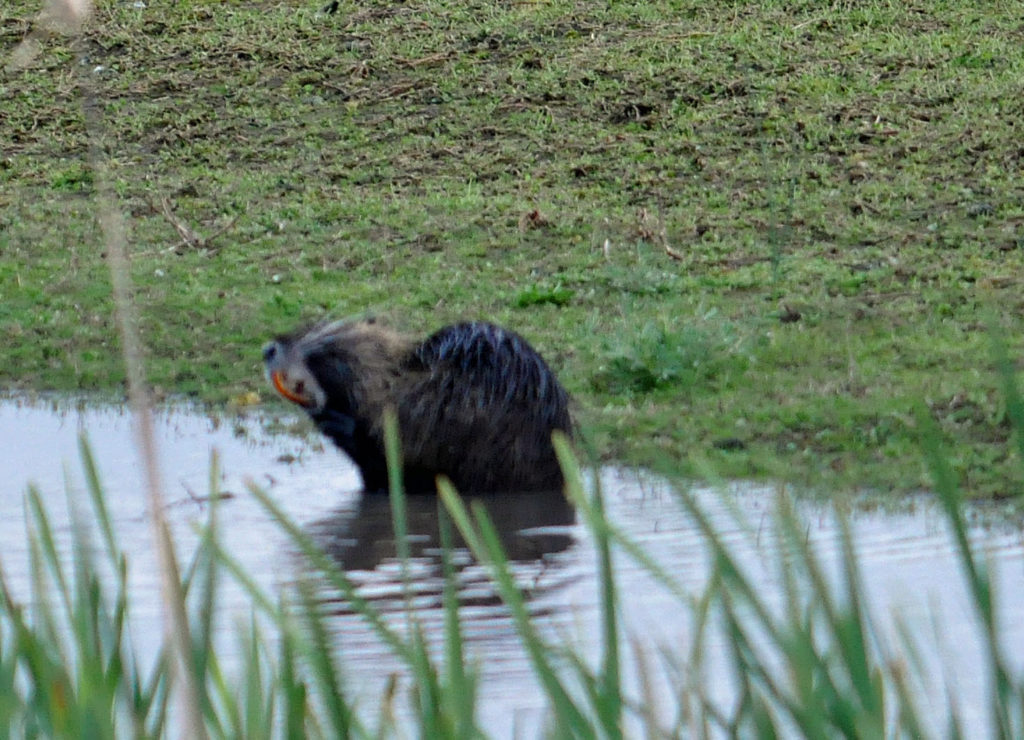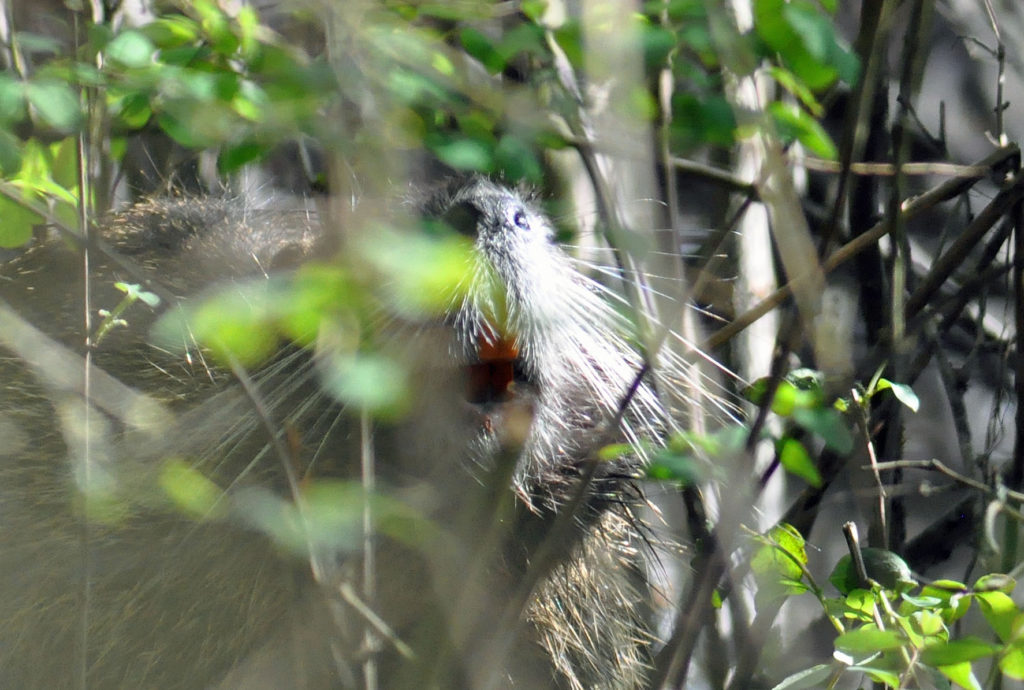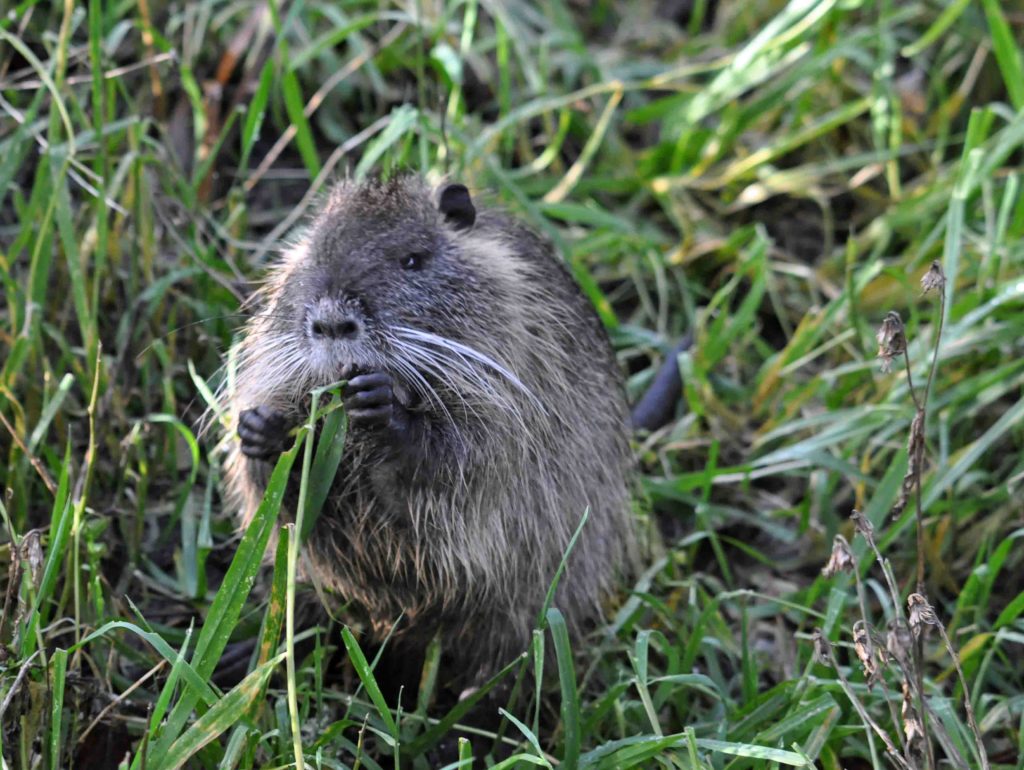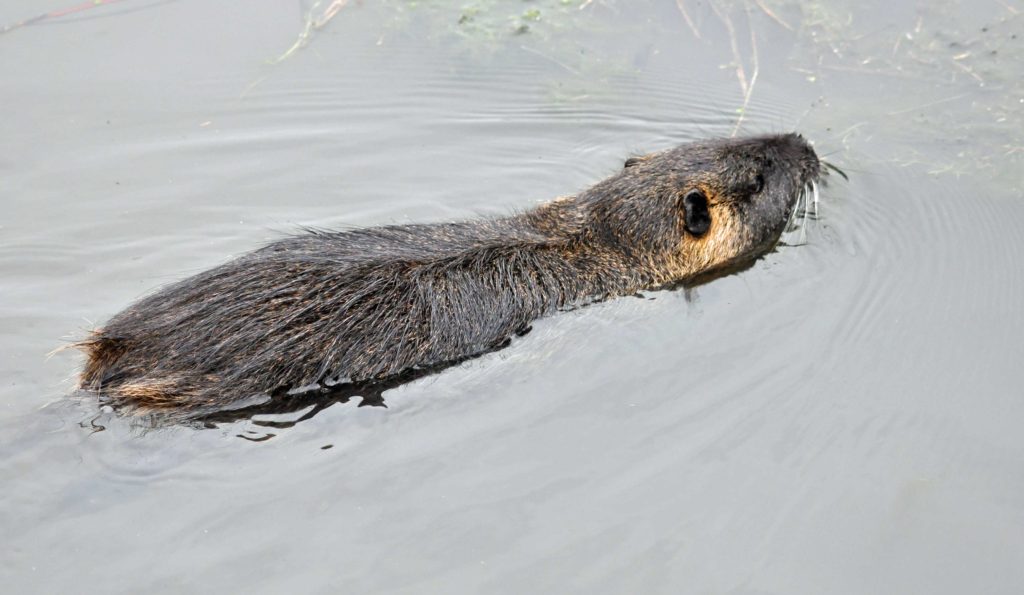The nutrias in the above photographs were found in Oregon at the Ankenny Wildlife Reserve outside of Salem and highlight some distinctive features of the animal.
As is the case with many other “invasive” species this animal did not invade – it was captured and brought to America. The first of these rodents arrived in the Southeast sometime in the 1880s in order to profit from their fur. Several of them escaped and have since made their way throughout much of America. But wait! According to sources quoted in Walkers Mammals of the Worldthe same thing has occurred in Canada, England, France, Holland, Scandinavia, Germany, Asia Minor, the Caucasus, Central Asia and Japan. Also commonly known as a Coypu this large rodent started out as a native species in South America. It has obviously adapted quite well to colder climates but Myocastor coyous has retained a strong affinity for aquatic environments. And that is where you are most likely to find them. Although I have observed several in Washington state I have found them to be extremely common in Oregon. Thanks to their diet these large rodents are usually considered pests. Most sources claim they are strictly vegetarians, which qualifies them as pests throughout most of their range, but other sources say that they also eat small invertebrates like snails. Smaller than a beaver but larger than a muskrat the nutria is often mistaken for both. The flattened tail of the beaver is an obvious difference. Muskrat tails are laterally compressed and their nose is of a more pointed shape than the blunt nutria nose.
References:
Walkers Mammals of the World, 6th Edition, Volume 2
Mammals of North America, Fiona A. Reid, Peterson Field Guides
Comments, critiques, corrections? reganjm@northwestwildlifeonline.com
<
>





[…] it is hard to miss their knowing assaults on the trees in their domain. For more on nutria go here: Nutria -Invasive Species Master on this website or just type in Nutria on the search […]